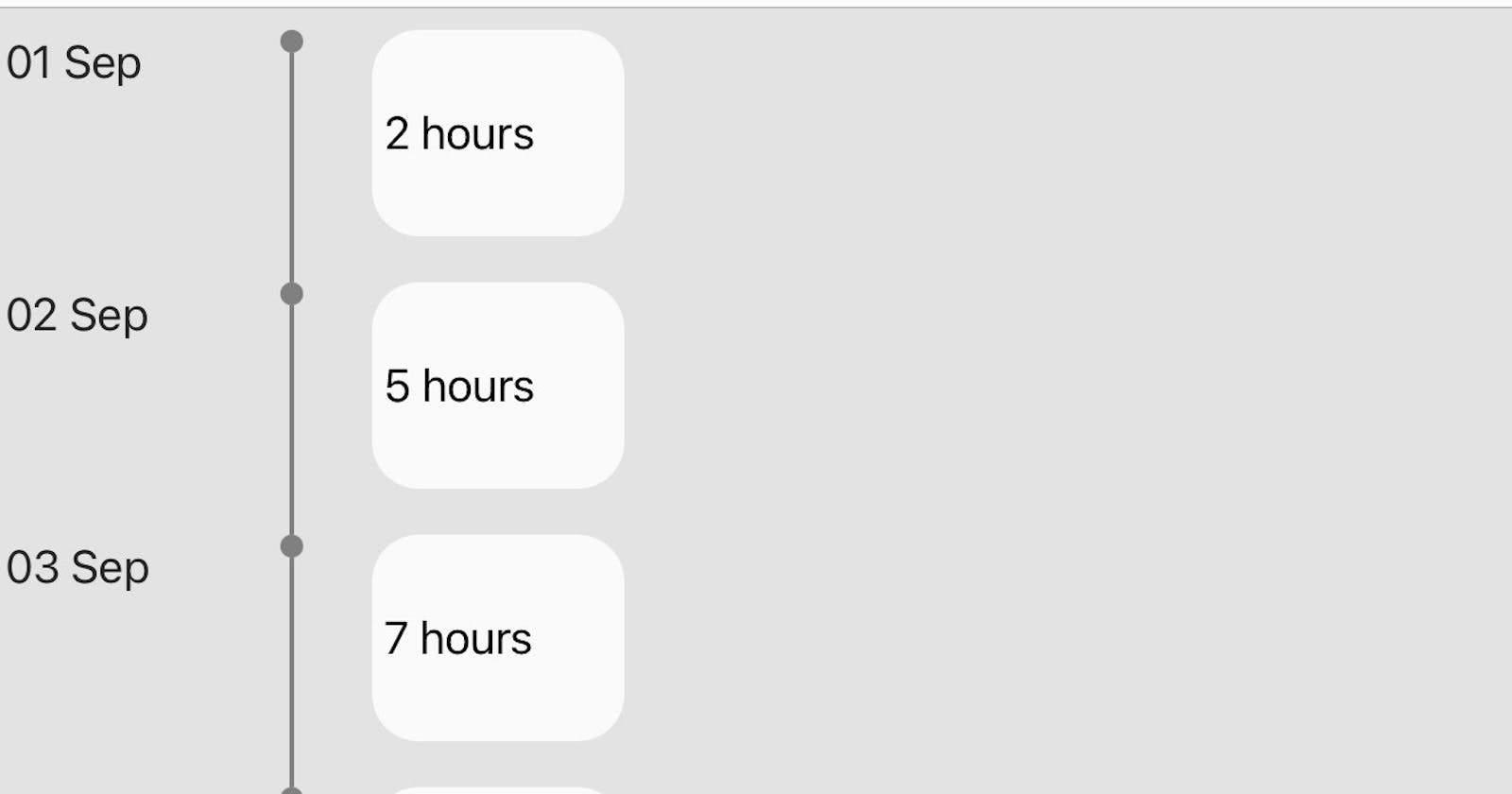This post will look at how to create a simple vertical timeline in a Nativescript-Vue app, similar to the one possible in Framework7.
As an example, let’s say you want to create an app for a cleaning services company. The company sends its employees to clean different houses/buildings during the day and the employee has to use the app to check-in and check out at every house he/she cleans so that the company tracks the amount of time the employee spends at a place. One of the views (screens) of the app will have to show an employee’s total time(in hours) spent cleaning on each day of a particular month. That's what we create in this tutorial.
Let’s get started. Create the Nativescript-Vue app by running the following command in the Terminal:
ns create my-timeline --vue
Suppose we want to show the data for September 2020 whose snippet is listed below:
export const SEPTEMBER = [
{
"date": "01 Sep",
"hours": 2
},
{
"date": "02 Sep",
"hours": 5
},
{
"date": "03 Sep",
"hours": 7
},
{
"date": "04 Sep",
"hours": 5
}
]
The following code is how to display the data in a timeline component:
<template>
<Page>
<ActionBar title="Home" />
<ScrollView>
<StackLayout padding="10" backgroundColor="#e3e3e3">
<GridLayout columns="100,50,120" class="home-panel"
v-for="(item,index) in sepData" :key="index"
@tap="onItemTap($event,index)">
<!-- DATE -->
<Label col="0" textWrap="true" :text="item.date"
verticalAlignment="top" />
<!-- DIVIDER -->
<GridLayout col="1" rows="10,100">
<!-- point -->
<ContentView row="0" width="10" height="10"
backgroundColor="#808080" borderRadius="50"
verticalAlignment="bottom" />
<!-- connector -->
<ContentView v-show="index!=(sepData.length-1)"
row="1" width="2" height="110"
backgroundColor="#808080" />
</GridLayout>
<!-- DURATION -->
<Label v-show="item.hours" col="2" class="hours">
<FormattedString>
<Span :text="item.hours"></Span>
<Span text=" hours" />
</FormattedString>
</Label>
</GridLayout>
</StackLayout>
</ScrollView>
</Page>
</template>
<script>
import {
SEPTEMBER
} from "./data";
export default {
data() {
return {
sepData: SEPTEMBER
};
},
methods: {
onItemTap(args, indx) {
alert(`Item tapped: ${indx}`);
}
}
};
</script>
<style scoped>
.home-panel {
font-size: 20;
}
.hours {
background-color: #fafafa;
padding: 5;
margin-bottom: 20;
margin-left: 10;
color: #000;
border-radius: 20%
}
</style>
In this example we used <ContentView> elements to create the divider, but we could have used an empty <Label> (or any other element) element instead.
That’s it. To create a timeline specific to your needs, you just have to tweak the styling attributes in VerticalTimeline.vue. In Nativescript Core , you use element in place of Vuejs’s v-for directive.
Appendix:
- Find the repo for the code used in this article here.

